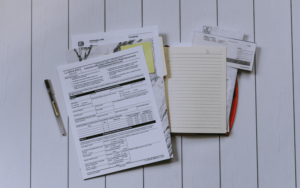You must spend at least three months writing your plan. It is important that you understand the purpose of your plan before you start researching and writing. Be clear about why you are writing the plan, what attracts investment, how you align the team and who sets the direction.
By writing a plan, you can clarify your business idea for yourself and your business partners. A good business plan can help you determine your strategy, identify potential obstacles, decide what resources you need and assess the feasibility of your idea and your growth plan, especially if you start a small business. It can also help you find the money you need, avoid costly mistakes and give investors who support your business a reason to invest in your business.
To write a business plan, you need to explore your ideal customers and competitors information to help you make strategic decisions. With the steps below for creating business plans, you are advised not only to create a document that serves a purpose, but also one that helps you understand your market and your competition, identify differences and plan for the future. For more tips on building a team and building a business, see our article on ideas for WeWork.
A strong and detailed plan provides a Clear Roadmap for the future, forces you to think about the validity of a business idea and gives you a better understanding of your company’s financial competitiveness. Once you have a plan, you will figure out what you need to do to start your business and what it takes to succeed. Your lean plan is your guide to building the business you want and is your key to success.
Starting your business plan with a structured sketch of the most important details in each section that you will include is a good first step you can take. With our free Lean Plan Template in Word format, you can first compile a one-page Lean Business Plan. Sketching is an important step in the process of creating a business plan, so we have put together a high-level overview that you can copy onto your blank document to start and avoid the horror of standing in front of a blank page.
This includes a mission statement explaining your company’s focus, a brief description of the product or service provided, basic information such as ownership and structure and a summary of your plan. In this chapter, you will focus on detailed industry research on your target market and its size and needs. Market analysis section presents general highlights and conclusions from the marketing research data you collect, as well as specific details from your marketing research studies before moving to the attachments section of your business plan.
Most of your business plan must include market research and financial information, such as financing plan and current financial status. You should know your industry, your target market and your business. Information about the market, your competitors and your customers should be considered relevant and relevant data points.
Depending on the objective, a good business plan can take days to weeks, which allows additional time for research and brainstorming. It is better to wait and not spend too much time writing a plan than to synchronize it with other important startup activities. Once you have put together a timeline, your potential investors will have an idea of what to expect.
Planning is a crucial part of starting a business, but not for the reasons you might think. Although it is tempting for entrepreneurs to make writing a plan their first task, subsequent studies have shown that it is a bad idea. Writing a plan takes time, and time that could be better spent assessing opportunities.
If you want to try to obtain money from a bank, a government backed lender, a venture capitalist or a non-profit development finance institution (CDFI), you will need a formal business plan. Whether you’re applying for a loan or looking for investors, a business plan shows you’re ready to consider your business idea, says Craig Allen, a financial adviser who teaches business plan writing classes at Southern New Hampshire University. In fact, a well-written 20-page business plan can help make an excellent case for financing your business and making more money.
From the SBA‘s point of view, a business plan must be of sufficient length to unlock funding sources, demonstrate that management understands the market and describe in detail the implementation of the strategy. Instead of developing a long document, a lean plan focuses on distilling your business strategy into a simple and concise set of statements. Detail details orchestrate complex interdependencies such as customers, competitors, operations, logistics, marketing and sales, and a well-written plan seems to plan actions and strengthen the links between these actions and the new company’s performance.
The average business plan comprises 40-50 pages, but can vary depending on the complexity of business. Most economists and advisers say it should be at least 30 to 50 pages, but others say more, depending on personal perspective. Stayli Business Plan Consultants has found in a survey of investors and needs that 15 to 25 pages of text is the optimal length to achieve this.
A 20-page business plan is dense with text and graphics, while a longer 35-page plan can be divided into readable dots with useful illustrations of the location of the product or company and diagrams illustrating important projections. Some people think that multi-page plans are too complex to describe, while 25-50-page business models are simpler, such as a one-person landscaping project. Depending on the complexity of the project, the process of drawing up a business plan can take between two weeks and six months.










